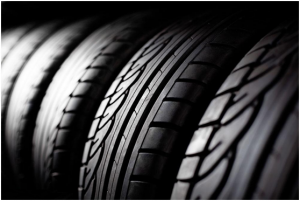
1.Tyre and Rim
(1)Check carefully before tyre mounting to see if the rim sizes are identical to those marked on sidewalls.
(2)The tyre should be fitted as much as possible to standard rims or allowable rim range.
(3)The tyre should not be fitted to deformed rims or non-conformity rims.
Warning:
Deformed rims or non-conformity rims will result in premature tyre toe failure or blow out to hurt people.
2.Inflated Pressure
(1) Rules should be followed to inflate the tyre.
(2) It is not appropriate to inflate the tyre over pressure and then release the air to standard pressure.
(3) Check the tyre pressure regularly and replenish when the air pressure is not found sufficient.
Warning:
Tyre under-pressure will cause decreased loading capacity, easy cord breaking and dangerous blow out. Tyre overpressure will cause cord strength loss and dangerous blow out.
3.Load
(1)Select the tyre of corresponding ply rating and load based on the vehicles standard loading capacity.
(2) The tyre of low ply rating cannot bear high load. The tyre load must not be increased by increase of inflated pressure.
(3) The load should be distributed evenly on the vehicle.
Warning:
Overload will cause a serious injury to the tyre or the people. The vehicle with the load unevenly distributed will cause some of tyres serious overload, which is one of the factors causing accidents.
4.Speed
The tyre should match the vehicle in operating speed and operate in the range of specified speed for vehicle.
Warning:
Overspeed will cause quicker tread wear, rapid heat buildup, tyre strength deterioration, separations and even tyre blow out.
5.Tyre Mounting
(1) Tyre of same specifications, ply ratings and tread patterns must be mounted on the same axle. The original tyre differs from the replaced tyre in height not more than 3%.
(2) Dual tyre rim ventilating holes should be in alignment with each other. Tyre valves should be positioned at 180° to each other. Dual spacing should be more than 20mm under static load.
(3) Tyre toe-in should be adjusted to a standard value.
(4) When the old tube is used, its outer circumference should not be over 92% of the inner circumference of the tyre, it is recommended that the old tube with more than 2 repair patches should not remain in use.
(5) The rim should be tightly and evenly, bolted into position.
(6) As to tyres of directional tread patterns, the direction marked on sidewalls should be identical to the direction of vehicle travel.
Warning:
Tyres of different specifications, ply ratings and tread patterns mounted on the same axle will deteriorate comprehensive tyre performances. Smaller dual spacing will cause easy heat buildup due to the friction between two tyres and cause premature tyre failure. The tyre toe-in poorly adjusted will cause vehicle’s directivity, tyre side slip, severe tread wear and increased fuel cost. Too big circumference of the old tube folded inside the tyre and tyre blow out.
6.Pre-ride of tyres
When new tyre have been mounted, the pre-ride should be taken below 50km/h of 200km for normal tyres. Though the pre-ride new tyres will adapt to deformation, remove the stress caused during manufacturing, decrease heat buildup and extend tyre performance life.
7.Others
(1) Quick start up, urgent braking, sharp turning, striking by sharp obstacles, contacts with corrosives and oil contaminants, operation in high temperature, etc. will cause premature tyre failures.
(2) Tyres should be well maintained and regularly shifted. The sharp obstacles punctured into lyres or the stones clogged in tread channels should be removed immediately.
(3) When the tyre tread has worn out to the extent specified, stop using it.
(4) If there is any problem regarding tyre quality, please do not hesitate to contact the tyre dealers or us to enable solving the problems immediately.
Tyres Maintenance
Level 1 Maintenance
Level 2 Maintenance
Copyright © 2021 Wordpress Developers